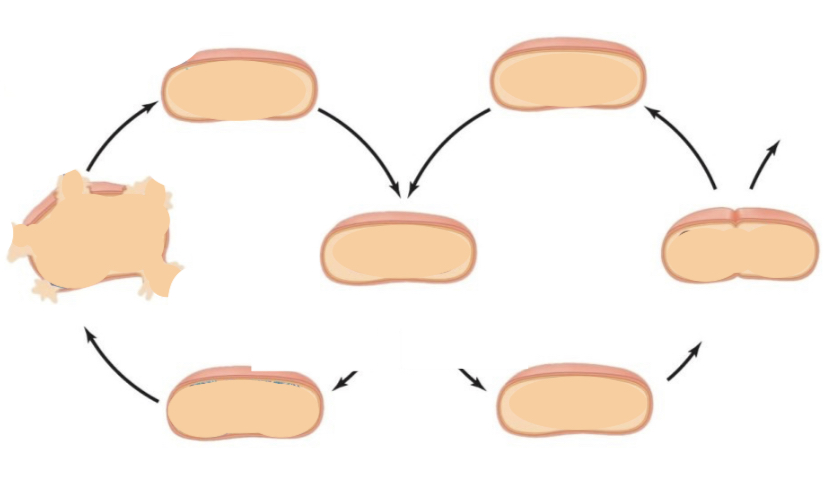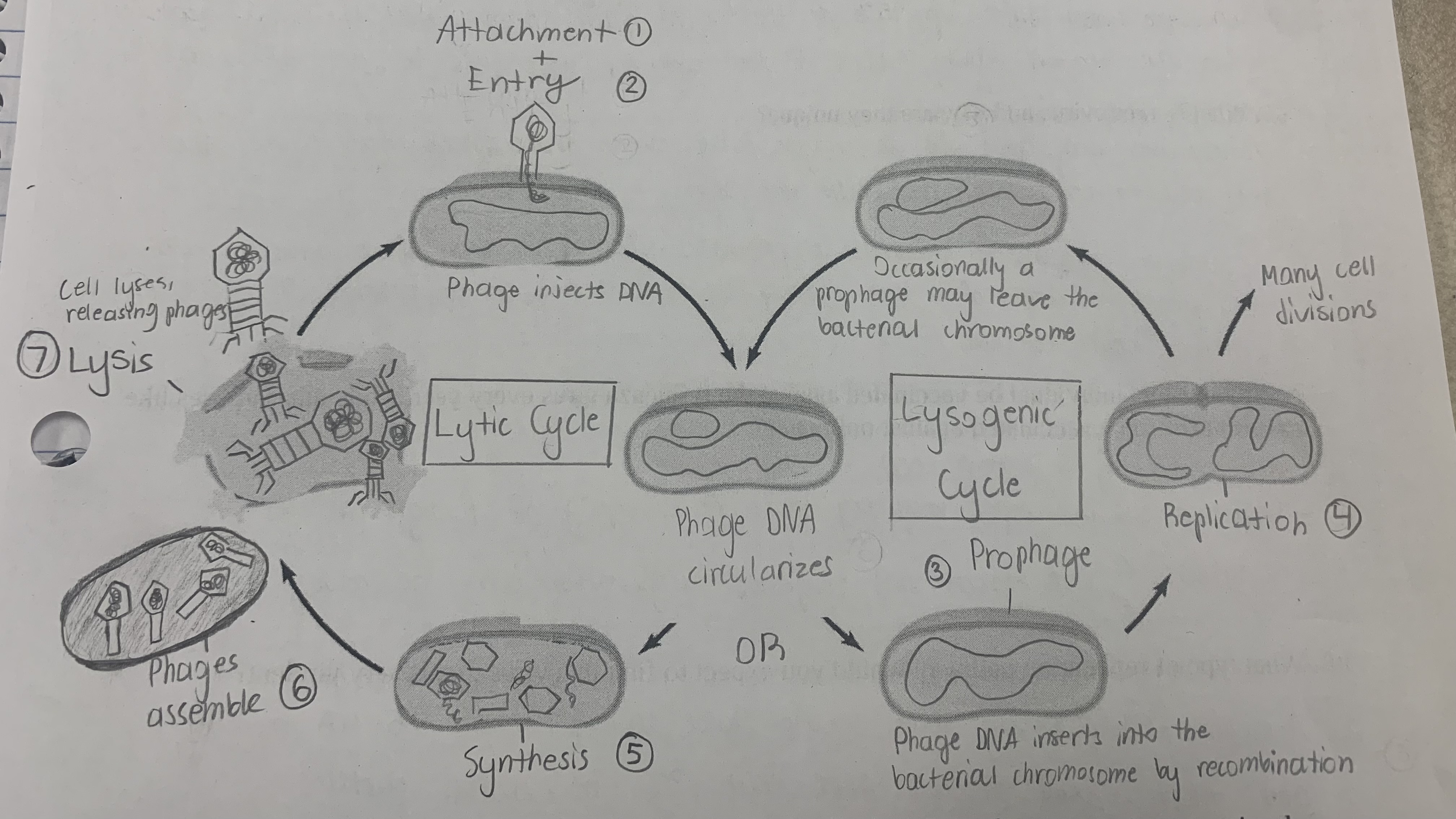Gr 11 Biology: Bacteria & Virus Quiz Review
1/5
There's no tags or description
Looks like no tags are added yet.
Name | Mastery | Learn | Test | Matching | Spaced |
|---|
No study sessions yet.
6 Terms
Structure of a complex virus (where genetic material is found)
■ consists of an inner nucleic acid core (DNA or RNA) – depending on type of virus
■ the genetic material may be single or double stranded
■ surrounded by an outer protective protein coat called capsid (the capsid is 95% of total virus and gives the virus its shape)
Bacteria environment
Bacteria inhabit almost every place on Earth
Tend to live in moderate environments aka-Mesophiles
Some exceptions that live in extreme environments aka- extremophiles
Broad host vs Narrow host range
Broad host range
■ Swine flu virus infects dogs and humans
■ Rabies virus can infect many mammalian species such as dogs, humans
Narrow host range
■ Human cold virus infects only the cells of the human upper respiratory tract
Naming types of bacteria
Archaea (archaeabacteria)
The oldest group of living organisms
2. Generally live without oxygen
3. Can be grouped into extremophiles such thermophiles, methanogens, and halophiles, acidophiles
Bacteria (Eubacteria)
Have rigid cell walls
• Example: Escherichia coli
• E. coli is both helpful and harmful to humans
• Many live in the intestine helping in food digestion and making vitamins
• Human/animal feces contain E. coli
• Lots of E. coli suggest fecal contamination in water
Asexual Reproduction vs. Sexual
1. Asexual Reproduction by binary fission (most common in proks).
1) A copy of its original chromosome is made
2) Cell elongates to certain size
3) Chromosomes separate
4) Cell builds a partition between each of them called septum 5) Original cell splits into 2 IDENTICAL CELLS
Sexual Reproduction by conjugation
• Can occur in less favourable conditions
• DNA is exchanged between two different cells producing NEW genetic combinations
1. One cell links to another through a pilus.
2. Genetic info is exchanged.
3. Binary fission then occurs to produce more cells with the new genetic combo.

Lytic & Lysogenic cycle
Lytic cycle
The method of viral replication. Resulting in the destruction of the infected cell.
1. Attachment: the virus chemically recognizes a host cell (e.g. bacterium) and attaches to it. Either the whole virus or only its DNA or RNA material enters the cells’ cytoplasm.
2. Synthesis of protein and nucleic acid units: genetic info contained in the viral DNA or RNA directs the host cell in replicating viral components (capsid, viral proteins)
3. Assembly: The viral nucleic acids, enzymes and proteins are brought together and assembled into new virus particles.
4. Release: the newly formed virus particles are released from the infected cell, and the host cell dies.
Cancer-causing viruses have a lysogenic cycle where the host cell may coexist with the cell and the virus remains dormant with replicating cells.
